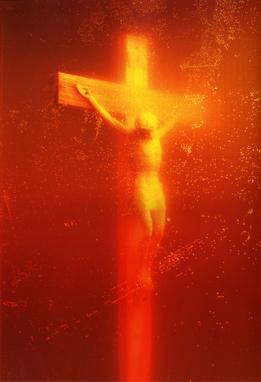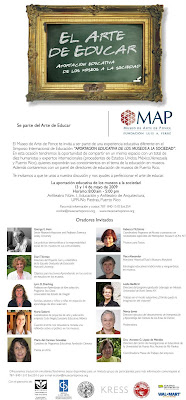
FOR years, with school budgets declining in so many American cities, museums have provided a parallel universe for learning. Now, with the Obama administration poised to support arts education with increased financing, museums nationwide are eager to align themselves with those efforts.
Cindy Karp for The New York Times
In Miami, students tackle computer graphics, with Dinorah de Jesus Rodriguez of the Miami Art Museum.
At the Oakland Museum in California, for example, where the collection spans art, history, the natural sciences and other disciplines, educators are showing schoolchildren how objects on exhibit are connected to their lives.
“We’re moving away from the authoritarian voice of a museum,” said Lori Fogarty, the museum’s director. “We’re taking the approach that everyone’s perspective is valid,” by providing a vibrant, intellectually rich — and safe — destination for young people from the local community.
One special night, the museum made way for visitors who rode up on customized skateboards and bikes, clad in fashions made from environmentally sustainable materials — recycled curtain lace, old shirts, soda-can tabs, even violin parts. Breezing through the opening of “Birth of Cool,” an exhibit of mid-20th-century fashion, music, art and architecture last May, 500 high school students then mingled in its companion show, “Cool Remixed,” which presented not only their artwork but also their energetic fashion responses to the question, “What is cool today?”
“The museum belonged to them,” Ms. Fogarty said, referring to the students who thronged the party for the dual shows. The event’s promotion relied heavily on blogs, Facebook postings, text-messaging and good old word of mouth, Ms. Fogarty said. “We’re talking about a very diverse urban setting,” Ms. Fogarty said, “where kids and families are not accustomed to coming to a museum.” By creating an environment that’s as warm and open as possible, she said, “We’re saying, ‘You can be a part of that.’ “
In this spirit of creating a community gathering place, the High Museum of Art in Atlanta has developed an after-school program for third to fifth graders. “Two days a week the kids come to us, and two days a week we go to them,” said Pat Rodewald, director of education at the museum. “Often both parents are working, which is why the kids are staying.” The two-to-four-week program, which tries to reinforce what the children are learning at school, culminates in an exhibit of their artwork.
At a recent reception for a student show, Ms. Rodewald said: “One little boy walked right up to me and gave me a hug. Then he said, ‘Can I give you a tour?’ “
In Miami, where the 2000 census found that 51 percent of the population was foreign born and that 68 percent of families spoke a language other than English at home, Terence Riley, director of the Miami Art Museum, has connected the diverse community to a building project that has yet to break ground.
“Since building is such a big part of Miami,” Mr. Riley said, “we thought, why not have the design of the new museum and the drawing up of building plans be part of education, and bring that into classrooms?”
A trained architect, Mr. Riley established an educational program, Brick by Brick, now in its second year, that connects artists, designers and educators with 40 middle school and high school students from four local community centers.
Although the program began before Barack Obama called for building bridges to connect diverse populations, Mr. Riley said: “If President Obama was here right now, I would tell him I grew up in a town of 18,000. Everybody was white. Virtually everybody was Christian. And although I still look back very fondly at Woodstock, Ill., Miami looks a lot more like the future. It’s wonderfully diverse. And there are many different perspectives.”
Using computers from nearby youth centers and laptops, cameras and video equipment provided by the museum, students in the program have been asked to consider their neighborhood as a design problem.
After recording the buildings and billboards in the area, students loaded their images and video into the computers. With help from local artists, designers and educators, they created facades — from the garish to the subtle — for their neighborhoods’ buildings and billboards, learning not only what blends in, or stands out, in urban environments, but also how these surfaces offer a kind of urban skin that can be customized or improved.
The students served by Brick by Brick, which is financed by the Heckscher Foundation for Children and J. P. Morgan Chase, are typically from difficult neighborhoods, Mr. Riley said. “This program is about their having a certain amount of control,” he said. “Through design we’re trying to show them that their neighborhoods are not irredeemable, that they can improve.”
In Atlanta, students take in ancient pitchers at the High Museum of Art.
An exhibit of the students’ designs, as well as the three-dimensional computer models of these neighborhoods rendered in miniature, is being planned for the spring. In the meantime, young people from the four local communities are invited to share their experiences, or post their artwork and stories and other related links, on a museum blog, mambxb.blogspot.com.
While the Miami museum is busy building bridges to local schoolchildren, the Cleveland Museum of Art is engaged in arts education programming geared to increasing its transparency.
“Obama wants to make his government transparent,” said Marjorie Williams, director of education and public programming. “That concept is really driving what we’re doing here.”
The museum’s Lifelong Learning Center, scheduled to open in 2012, will be just off the main entrance, she said. This location, and an abundance of glass in the architecture, are intended to enhance the center’s main purpose: offering a behind-the-scenes study of museum activities, she said.
In the 10,000-square-foot center, interactive equipment will enable classes and families to experience how exhibits are assembled and organized, and how collections are maintained. By accessing the museum’s collections on a computer, visitors will be able to curate virtual exhibits of their favorite artworks and historical objects, projecting images of their selections on the center’s walls. “We want to remove all the mystery about what happens in a museum,” Ms. Williams said.
The museum has already been beaming its collections and educators into school classrooms through live videoconferencing equipment. In 2008 alone, Ms. Williams said, the museum’s Distance Learning Program reached more than 28,000 students, from Cleveland to the remote village of Wildwood in Alberta.
Most museum administrators agree that arts education is essential for encouraging children to think creatively. Robert Lynch, president and chief executive of Americans for the Arts, an advocacy group, and a member of Mr. Obama’s national arts policy committee, said: “In order for Americans to remain competitive in the global economy, we have to make sure that our kids are getting meaningful arts education.”
Still, school classrooms have suffered from repeated cuts to education. And given the current economic climate, financing for kindergarten through 12th-grade arts education programs in city schools is endangered.
In the meantime, the Phillips Collection in Washington has embraced what it sees as the very backbone of arts education: local schoolteachers.
When an exhibit organized by the museum, “The Great American Epic: Jacob Lawrence’s Migration Series,” went on a national tour in 2007, Susan Wright, director of education at Phillips, said she saw a great opportunity.
She and her staff contacted teachers from schools within easy traveling distance of the museums where the exhibit was on view. “We’ve got this nationally traveling art exhibition,” she said she told them. “We want to work with your community and your students.”
Offering interested teachers stipends to support their research, members of the museum staff helped them create lesson plans about “The Migration Series,” Mr. Lawrence’s colorful 60-panel cycle from 1941 that depicts the historic flight of more than six million African-Americans from impoverished communities in the rural South to cities in the North.
“Migration is a continuing reality in America,” Ms. Wright said, adding: “We are a country made up of immigrants; we really tried to generate enthusiasm and encourage teachers to take risks by pushing the boundaries of their curriculum. Then we tried to show them how making a difference in their curriculum could have an impact nationally.”
At a follow-up forum in Washington, teachers and other educators described how the traveling exhibit was used in multiple disciplines, from social studies to language arts. “A second-grade teacher from Texas had never used art in the classroom before,” Ms. Wright said. “That was really powerful.”
In spite of these efforts, however, Ms. Wright said teacher support of arts education had been seriously eroded by the priorities of the No Child Left Behind Act. At the Phillips, for example, programs virtually grind to a halt during the two-month drilling period when children prepare for tests, she said.
“There’s such pressure on teachers now,” she said. “If their students don’t perform well on tests, they worry about losing their jobs.” In taking such a narrow view toward education, she said, “No Child Left Behind is not preparing students for their role in 21st-century society.”
A spokesman at the federal Department of Education said it was too early to know how a reframed — and renamed — No Child Left Behind Act would affect K-12 arts education. Referring to the secretary of education, Arne Duncan, the spokesman said, “Secretary Duncan has opinions based on his longtime experience as a superintendent, but he wants to speak to people in the field before he develops a plan for N.C.L.B.”
And while museum directors remain hopeful, they also want their accomplishments recognized.
“It’s just shocking to me,” said Ms. Fogarty, referring to an amendment, proposed last month by Senator Tom Coburn, Republican of Oklahoma, that grouped museums with golf courses and casinos as being similarly nonessential and thus not eligible for money in the recovery package. (The approved package ultimately preserved a $50 million allocation to the National Endowment for the Arts and eliminated the language that excluded museums.)
“The Obama platform mentions the impact arts can have on creative thinking,” she said. “But there still seems to be this limited understanding of the role museums play in this. We are schools if we’re providing for schools. I know many museums that have thousands of kids coming through their doors every day.”


 The Holocaust, vies not from then, but from here and now
The Holocaust, vies not from then, but from here and now BERLIN - Rebuilding a Palace may become a great blunder
BERLIN - Rebuilding a Palace may become a great blunder





















